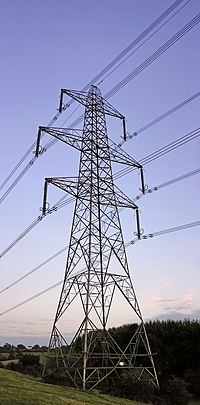
Photo from wikipedia
Abstract A new antenna design for driving current in high beta tokamaks using electromagnetic waves, called Helicons, will be experimentally tested for the first time at power approaching 1 megawatt… Click to show full abstract
Abstract A new antenna design for driving current in high beta tokamaks using electromagnetic waves, called Helicons, will be experimentally tested for the first time at power approaching 1 megawatt (MW) in the DIII-D Tokamak. This method is expected to be more efficient than current drive using electron cyclotron waves or neutral beam injection, and may be well suited to reactor-like configurations. A low power (100 watt (W)) 476 megahertz (MHz) “comb-line” antenna, consisting of 12 inductively coupled electrostatically shielded, modular resonators, was tested in DIII-D and showed strong coupling to the plasma without disturbing its characteristics or introducing metal impurities. The high power antenna consists of 30 modules affixed to back-plates and mounted on the outer wall of the vacuum vessel above the mid-plane. The antenna design follows a similar low power antenna design modified to minimize RF loss. Heat removal is provided by water cooling and a novel heat conducting path using pyrolytic graphite sheet. The CuCrZr antenna modules are designed to handle high eddy current forces. The modules use molybdenum Faraday shields that have the plasma side coated with boron carbide to enhance thermal resistance and minimize high Z impurities. A RF strip-line feed routes the RF power from coaxial vacuum feed-throughs to the antenna. Multipactor analysis of the antenna, strip line, and feed-through will be performed. A 1.2 MW, 476 MHz klystron system, provided by the Stanford Linear Accelerator (SLAC) will provide RF power to the new antenna. A description of the design of the high power antenna, the RF strip-line feeds, and the vessel installation will be presented.
Journal Title: Fusion Science and Technology
Year Published: 2017
Link to full text (if available)
Share on Social Media: Sign Up to like & get
recommendations!